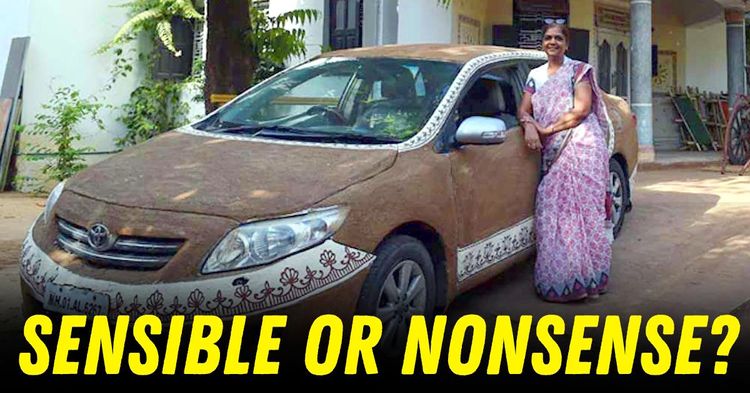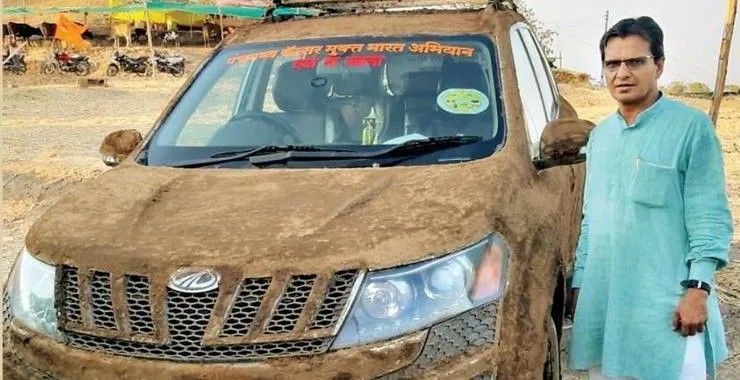Cowdung On Cars During Summer: Sensible Or Nonsense?


Winter in North India is slowly receding, and people living in the Delhi NCR region have already started getting a hint of what the summer is going to look like. As we already know, installing window tints on cars to reduce heat in the cabin is actually illegal in India. So, the AC in most cars will have to work harder. A few years ago, we came across a trend where people were plastering the exterior of their cars with cow dung, claiming that it helped reduce cabin heat. Here are a few examples of the same:
This was one of the first cases we saw online. The Toyota Corolla sedan was completely covered in cow dung. The panel gaps were all maintained while plastering, and it looked clean.

After the Corolla, we saw videos and images of Dr. Navnath Dudhal, a senior doctor at Tata Cancer Hospital, Mumbai. He decided to apply not one but three coats of cow dung on his Mahindra XUV500 SUV. The doctor claimed that he came across this idea as he regularly studies cow urine to understand its benefits for cancer patients.

The "gangster van" Maruti Omni couldn’t escape this trend. The owner completely covered the minivan in cow dung to beat the heat. Every panel, except the bumper and the ORVMs, was covered in cow dung.
Apart from these, many more owners of cars like the Maruti Ignis, Toyota Innova, Hyundai i20, and Maruti Alto 800 followed this cow dung plastering trend.
The main reason most owners did this was to reduce the cabin temperature. Many claimed that they had stopped using AC in their cars after plastering them. In many villages, cow dung and straw were traditionally used to plaster the exterior and interior walls of houses. These materials were commonly available and provided good insulation against heat. The cow dung and straw mixture could retain moisture, helping to lower the temperature inside the house. In theory, applying cow dung to a car should have a similar effect.
However, that is not the case. With cars, things work differently. Cars are made of metal sheets, which tend to heat up when parked outside. While cow dung might slightly reduce the cabin temperature, it is not effective enough to eliminate the need for AC.
Additionally, owners would need to pour water on the cow dung regularly to retain moisture and lower the cabin temperature. However, doing this frequently could lead to rusting of the body panels. There is also a risk of damaging the car's paint. Just like bird droppings, if cow dung sits on the body panels for too long, it may cause permanent discoloration. Apart from all this, it also ruins the vehicle’s appearance. So to conclude, this theory is not proven scientifically and we don't recommend anyone to do the same.
The major reason for heat inside the cabin is the air trapped within it. Applying cow dung is not a practical solution. Instead, always try to park in a covered area. There are several car covers, reflectors, and accessories available online that can help reduce the heat inside the cabin when the car is parked directly under the sun.